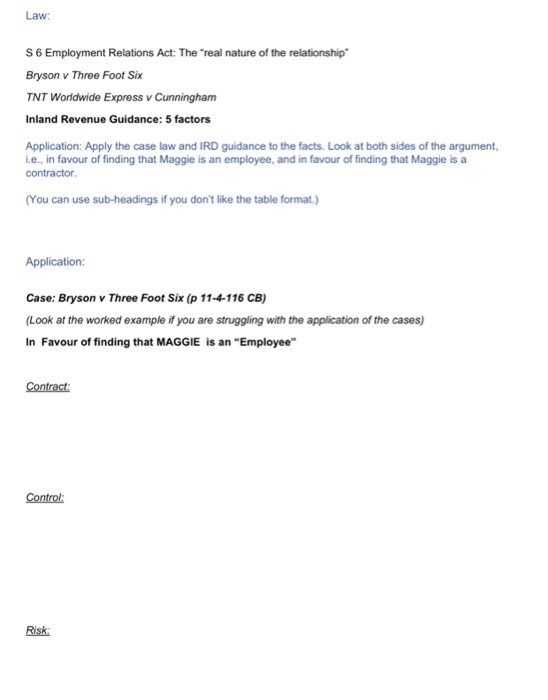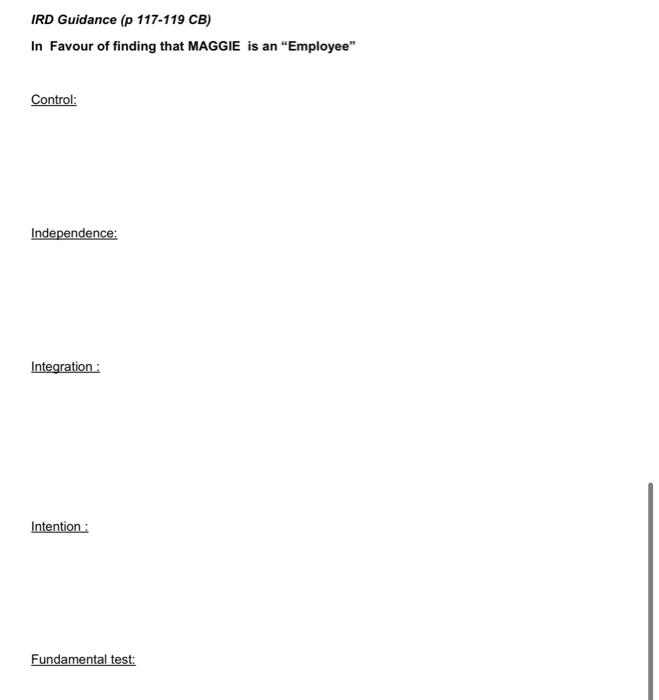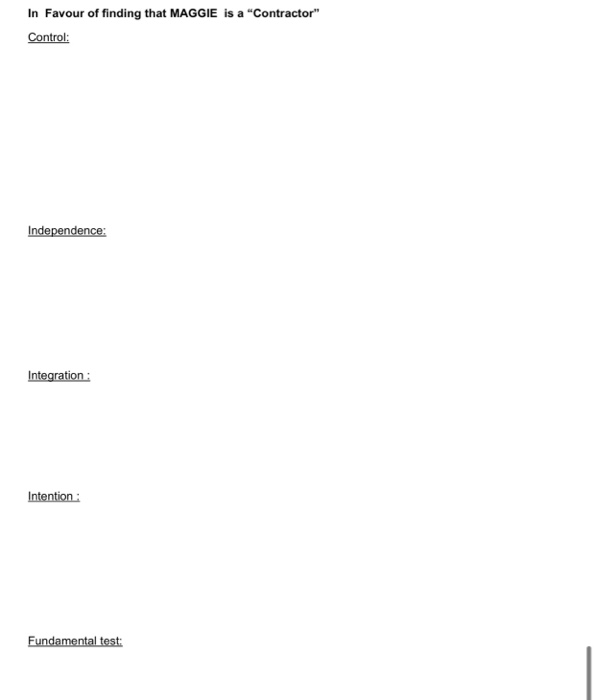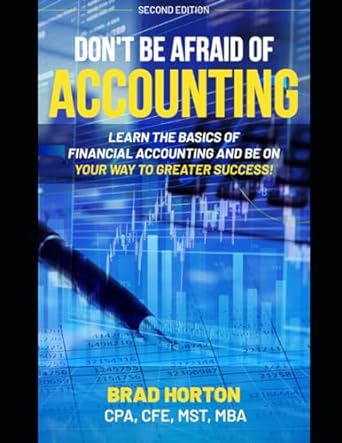QUESTION Maggie delivers bread for the Italian Bread Shop ("IBS") based in Parnell. IBS bakes and distributes a variety of fresh breads and cakes. Maggie is engaged to deliver the bread throughout Auckland's eastern suburbs. Her contract contains a number of terms and conditions but does not directly address her work status. For her work Maggie must provide her own van which she purchased with a bank loan for $15,000. IBS paid a further $1,000 to have the van painted in Italian colours and sign-written with the IBS logo. While working Maggie is required to wear the IBS uniform provided to her. She must deliver the bread to the outlets and at the times directed by IBS. The contract also requires Maggie to: purchase and maintain a mobile phone maintain a goods delivery drivers licence take out insurance against loss or damage to goods while being delivered not work with any competing organisation. Maggie's contract may be terminated by either party with 30 days' notice. It may be terminated immediately by IBS if Maggie loses her goods delivery driver's licence, if she seriously breaches her contract, or if she is unavailable to make deliveries (without providing a replacement driver) for more than 3 days. Maggie is paid a flat delivery fee of $50 per day plus $10 per carton of bread delivered (with a minimum of 30 cartons guaranteed), so regardless of workload she earns at least $350 per day. These fees are intended to pay Maggie for her services and cover all her petrol and vehicle expenses. Her fees are totalled and paid monthly upon presentation of her delivery sheets. All drivers are entitled to charge GST in addition to their fees (if GST registered) but must provide a separate invoice when doing so. Maggie must keep her own business records and pay her own taxes. Maggie's contract requires her to work 6 days a week for 50 weeks a year. If she is unable to work (due to illness or holidays) she is required to arrange with another driver to make her deliveries. Advise Maggie whether she is an independent contractor or employee and explain the significance of the distinction. Law S6 Employment Relations Act: The real nature of the relationship Bryson Three Foot Six TNT Worldwide Express v Cunningham Inland Revenue Guidance: 5 factors Application: Apply the case law and IRD guidance to the facts. Look at both sides of the argument, i.e., in favour of finding that Maggie is an employee, and in favour of finding that Maggie is a contractor (You can use sub-headings if you don't like the table format.) Application: Case: Bryson v Three Foot Six (p 11-4-116 CB) (Look at the worked example if you are struggling with the application of the cases) In Favour of finding that MAGGIE is an "Employee" Contract: Control Risk In Favour of finding that MAGGIE is a "Contractor" Contract: Control: Risk: Case: Cunningham (p 117 CB) In Favour of finding that MAGGIE is an "Employee" In Favour of finding that MAGGIE is a "Contractor" IRD Guidance (p 117-119 CB) In Favour of finding that MAGGIE is an "Employee" Control Independence: Integration : Intention : Fundamental test: In Favour of finding that MAGGIE is a "Contractor" Control: Independence: Integration : Intention Fundamental test: Conclusion: You should explain whether Maggie is a contractor or an employee, and the tax consequences for Maggie. 2-3 sentences on the tax consequences will suffice for now












